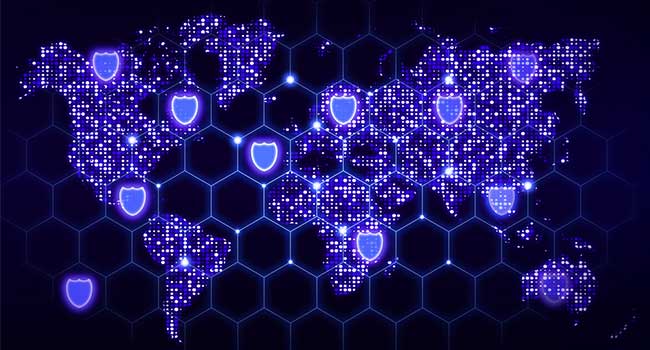
Cybersecurity Awareness Month: Meeting Awareness with Action
- By Bill Bernard
- Oct 05, 2022
Cybersecurity Awareness Month allows us to reflect on our progress in information security and the components that still need work. As the term “cybersecurity” has made its way into mainstream vernacular (not just in sci-fi movies but in everyday conversations in the workplace and home), it would be tough to argue that cybersecurity awareness hasn’t grown tremendously in the past few years. But what does cyber awareness mean, and what’s the ultimate goal in increasing awareness across the general population?
Being cyber aware is the online equivalent of not getting into the van of the person offering you candy as a kid. It’s about situational awareness - in the virtual world. Today, more people outside my infosec and tech circles seem to be aware that some cybersecurity “issue” generally exists - personal risks and threats against companies and our nation.
While we’ve built awareness of “the problem,” I believe we can continue building an understanding of what everyone, not just the tech pros, can and should be doing to improve security for all. Everyone is responsible for protecting themselves and the organizations they care about. As our lives become increasingly intertwined with the online world, we need to adopt a “security hygiene” mindset when interacting with technology. We all need to rally the troops to keep cyber attackers at bay. Here are four reminders to evangelize amongst your friends, family, and colleagues.
Enable Multi-Factor Authentication. Yes, it adds an extra step. But it’s worth preventing unauthorized individuals from accessing your account or data. Users who enable MFA are significantly less likely to get compromised. It provides backup if your password becomes compromised; unauthorized users would be blocked by the second authentication requirements, ultimately keeping them out of your accounts. Do it: the Two Factor Authentication (2FA), Multi-Factor Authentication, Two-Step Authentication, whichever your service asks you to do.
Use Strong Passwords. Bad passwords, coupled with no MFA, are a recipe for disaster. Follow whatever instructions your security department at work has documented for you, but for your purposes, use these guidelines:
- Use a different, complex password for every site you visit. I mean it. EVERY. SINGLE. ONE.
- Don’t use names or numbers that have meaning for you. Sure, the date of your marriage might be easy to remember, but it is also easy for bad actors to figure out - and as such, has no business being part of your password. Your first child’s name plus the date of their birth - yeah, that’s trivial as well. And if I ever find “qwerty” as part of your password, well, let’s just say we’re gonna have a frank conversation.
- Use a password that is at least 12 characters. Yes, a few years ago, we said 8. Nowadays, an eight character password with upper, lowercase, and numbers can be brute-force guessed in about 2 minutes, while a 12-character one of the same complexity will take 24 years.
- Use a password manager. There are several good ones out there; pick one and go. Use a good, really LONG password for your password manager, and then use it to generate unique passwords for all your websites and apps. A password manager with MFA is even better!
Recognize and Report Phishing. People are becoming more aware of suspicious links,, we’re moving too fast, and things still get clicked. Follow these guidelines to help you discern phishing from regular emails:
- Is the sender asking you to do anything?
- Is that something you were expecting them to ask you to do?
- Are they indicating significant urgency?
- Are they trying to get you to react without thinking?
- Can you validate the request without using any of the information in the email?
- Can you go directly to a website or phone number you already know?
- Pretend you got the email on April Fools Day and apply the same skepticism to this email that you would to anything told to you that day.
These guidelines won’t keep you safe from every phishing attempt by themselves, but they’re a great start.
Update your software AND ALL THE THINGS!
Bad actors will exploit flaws in the system. Network defenders are working hard to fix them as soon as they can, but their work relies on all of us updating our software with their latest fixes.
Update the operating system on your earbuds, mobile phones, tablets, smart TVs, internet-connected toasters, self-driving cars, and laptops. (OK, maybe you don’t have all of these things but remember, any “smart” device is a computer running an OS, and that OS is 100% guaranteed to have at least one flaw in it). As a general rule, if you can no longer get updates for your device’s OS, it is time to retire it, as unsupported devices are unsafe. With the increased likelihood that you’re working from home these days, that vulnerability in your network could be a way into your company’s network - and you don’t want to be that person, do you?
After the OS updates, update your applications – especially the web browsers – on all your devices too. Leverage automatic updates for all devices, applications, and operating systems whenever and wherever they exist.
Like Smokey says: “Only you can prevent [cybersecurity incidents]!” OK, I paraphrased, but just as it isn't solely the forest ranger’s job to prevent fires, we shouldn’t expect any of our favorite gadget makers, social platforms, or other tech services to guarantee our online security. Even in a work setting, your friendly Cybersec team needs your help as the first line of defense against cyber incidents. For cyber security awareness month this year, let’s meet awareness with action; after all, the data you save could be your own.